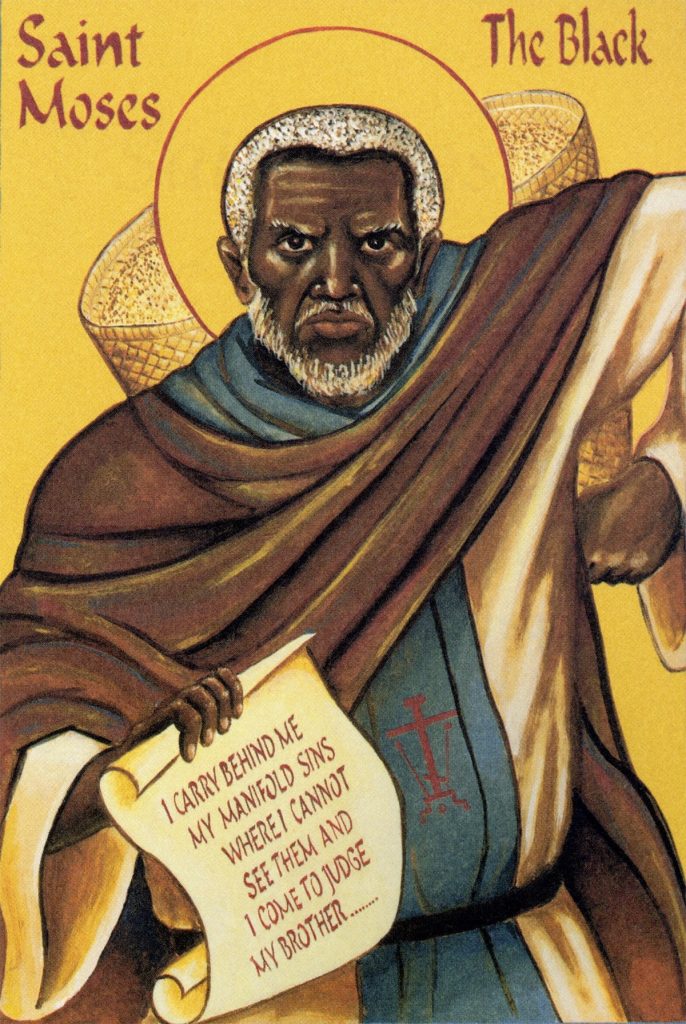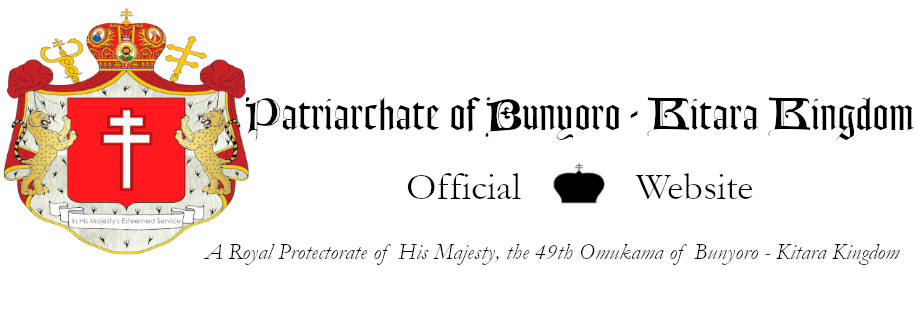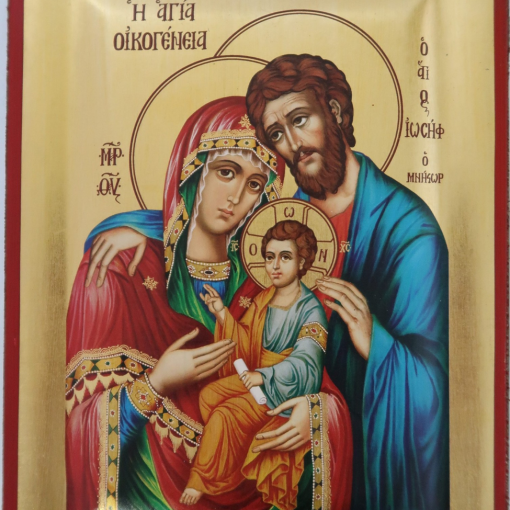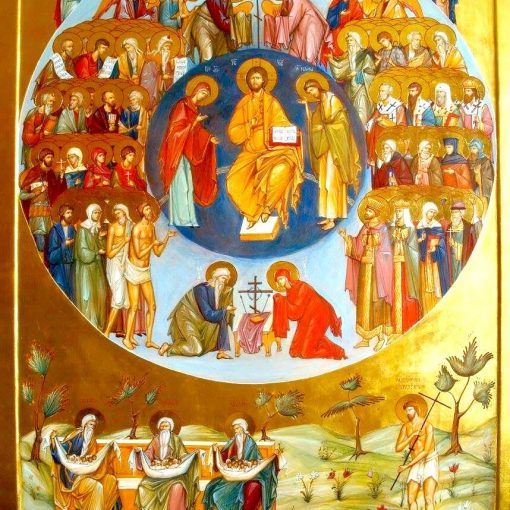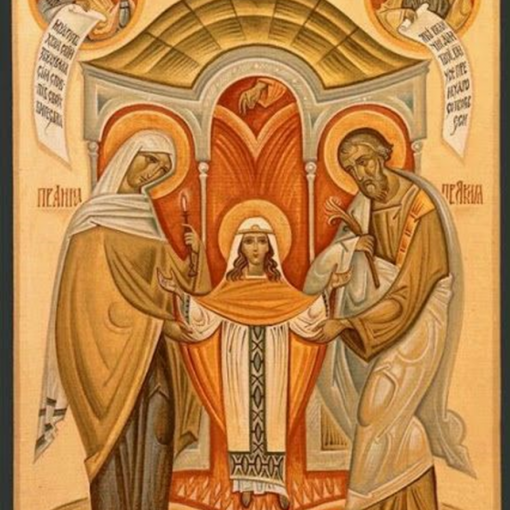Troparion – First Tone
Thou didst prove to be a citizen of the desert, an angel in the flesh, and a wonderworker, O Moses, our God-bearing Father. By fasting, vigil, and prayer thou didst obtain heavenly gifts, and thou healest the sick and the souls of them that have recourse to thee with faith. Glory to Him that hath given thee strength. Glory to Him that hath crowned thee. Glory to Him that worketh healings for all through thee.
Reading from the Gospel of Matthew
And from the days of John the Baptist until now the kingdom of heaven suffers violence, and the violent take it by force. For all the prophets and the law prophesied until John. And if you are willing to receive it, he is Elijah who is to come. He who has ears to hear, let him hear!
~Chapter: 11 Verses: 12-15
Reading from the Gospel of Luke
One of the criminals who were hanged there was hurling abuse at Him, saying, “Are You not the Christ? Save Yourself and us!” But the other answered, and rebuking him said, “Do you not even fear God, since you are under the same sentence of condemnation? And we indeed are suffering justly, for we are receiving what we deserve for our deeds; but this man has done nothing wrong.” And he was saying, “Jesus, remember me when You come in Your kingdom!” And He said to him, “Truly I say to you, today you shall be with Me in Paradise.”
~Chapter: 23 Verses: 39-43
Reading from the Gospel of Luke
Now Jesus came to Nazareth, where he had been brought up, and went into the synagogue on the Sabbath day, as was his custom. He stood up to read, and the scroll of the prophet Isaiah was given to him. He unrolled the scroll and found the place where it was written, “The Spirit of the Lord is on me, because he has anointed me to proclaim good news to the poor. He has sent me to proclaim release to the captives and the regaining of sight to the blind, to set free those who are oppressed, to proclaim the year of the Lord’s favor”
~Chapter: 4 Verses: 16-19
Homily
Saint Moses the Black, was a born slave a people who worshiped a sun god. He was disobedient and his master cast him out, and he became a known thief. Later, however after seeking refuge amongst praying brothers during a robbery gone wrong, witnessing their ways led to repentance, he converted, and took up the monastic life under Saint Isidore of Scete. He had a rather difficult time adjusting to regular monastic discipline. There are many tales of his hedonistic lifestyle before and after conversation. His flair for adventure remained with him. Attacked by a group of thieves in his desert cell, Moses fought back, overpowered the intruders, and dragged them to the chapel where the other monks were at prayer. He told the brothers that he didn’t think it Christian to hurt the robbers and asked what he should do with them. The overwhelmed robbers repented, were converted, and themselves joined the community.
St. Moses was zealous in all he did, but became discouraged when he was felt he was not perfect enough. Early one morning, St. Isidore, abbot of the community, took Brother Moses to the roof and together they watched the first rays of dawn come over the horizon. Isidore told Moses, “Only slowly do the rays of the sun drive away the night and usher in a new day, and thus, only slowly does one become a perfect contemplative.”
St. Moses proved to be effective as a prophetic spiritual leader. The abbot ordered the brothers to fast during a particular week. Some brothers came to Moses, and he prepared a meal for them. Neighboring monks reported to the abbot that Moses was breaking the fast. When they came to confront Moses, they changed their minds, saying “You did not keep a human commandment, but it was so that you might keep the divine commandment of hospitality.” Some see as the first account and earliest reference to the Paschal fast.
He gave himself over to prayer and the supression of the carnal mind with such diligence that he later became a priest of exemplary virtue. He was revered by all for his lofty ascetical life and for his great humility. Once the Fathers in Scete asked Moses to come to an assembly to judge the fault of a brother, but he refused. When they insisted, he took a basket or blanket depending on the story telling, which had a hole in it, filled it with sand, and carried it on his shoulders. When the Fathers saw him coming they asked him what the basket might mean. He answered, “My sins run out behind me, and I do not see them, and I am come this day to judge failings which are not mine.”
After many years in spiritual struggle, the it was believed a demon envied him, and struck him with a sore on his foot which made him sick and bed-ridden. When he knew that this was a test, he increased in his asceticism and worship, until his body became as a burnt wood. God looked to his patience, healed his illness, and removed all his pains. The blessing of the Lord came upon him. After a while, he became the Father and the spiritual guide of 500 brothers, who elected him to be a priest. When he came before the Patriarch to be ordained, the Patriarch wanted to test him by asking the elders, “Who brought this black here? Cast him out.” He obeyed, and left saying to himself, “It is good what they have done to you, O black colored one. The Patriarch, however, called him back and ordained him a priest, and said to him, Moses, all of you now has become white.”
One day, he went with some elders to St. Macarius the Great, who said to them, “I see among you one to whom belong the crown of martyrdom.” St. Moses answered him, “Probably it is me, for it is written: ‘For all they that take with the sword, shall perish with the sword.'” (Matt. 26:52). After they returned to the monastery, it did not take long until the Berbers attacked the monastery. He told the brethren, “Whoever wants to escape, let him escape.” They asked him, “And you O father, why do you not also escape?” He replied that he had waited for this day for long time. Moses conscious that he himself had slain other men when he was a thief, awaited them and was willingly slain by them feeling it was just.
Berbers entered the monastery and killed him with seven other brothers. One of the brethren was hiding, and saw the angel of the Lord, with a crown in his hand standing by and waiting for him. He went out from his hiding place to the Berbers and he was also martyred.
His body is now located at Virgin Mary’s Coptic Orthodox Monastery of El-Baramous in Egypt.
There are many lessons to be learned in a life of saint with such a well lived life, but perhaps in his martyrdom is some of the strongest messages. That in the life and death of each of us and on each path we choose during it, there is both sin and virtue. Salvation and consequence. Christ knew this lesson even in the moments of his greatest human anguish, as he suffered side by side with a repentant thief they rose together that day. St. Moses started his path to salvation by being a thief and in turn converted others as well as himself away from such a life. Ultimately choosing to fall himself at the hands of those like a previous version of himself rather than let others suffer. The wisdom gained in the life of sin prepared him for the physical battle that would come when thieves attacked the chapel, and then later at his death, but it was his spiritual life after conversion that prepared him for all the living in between and after.
The scars of sin are taught lessons, and salvation a balm, but scars can teach and serve while healed. The actual living a life of sin offers to us the how and why we need the graces of the Holy Spirit, knowing when and from whom to ask it, is why Christ became man, so we would have the opportunity to do so. Let us gain solace in the life and works of St. Moses that even after a life of sin, great works and greater faith can accomplish more than one thief with a sword every could alone.
~Elisheva+
